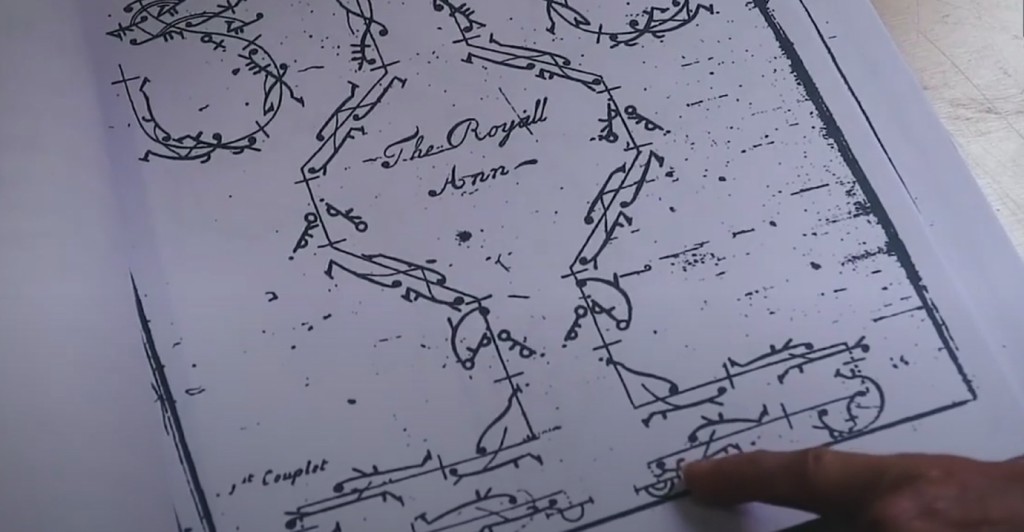Early Dance Circle Labday

- Date: 3rd December 2021
- Time: 10-11.30 GMT, 11-12.30 CET
- Online via Zoom
- Language: English
Image: Screengrab from the CultureMoves Film created for the EDC Baroque Dance Module, courtesy of EDC / C-DARE Coventry University
COVUNI (Centre for Dance Research, C-DaRE) and the Early Dance Circle (EDC) collaborated to organise an Early Dance LabDay to present about the work the charity is doing across the UK, get a sense of the various periods they cover, gain insight into their online activities and also learn more about the content they are providing for the WEAVE project. The LabDay also revisited the EDC Baroque Dance MOOC developed under the CEF CultureMoves project.
For the Early Dance Module where a collaboration with the Early Dance Circle and Chalemie took place, the module provided an introduction to Baroque dance focused on its more formal couple dances, rather than its professional, stage and comedic (more virtuosic) sides, or its rich and various heritage of country dances involving sets of dancers.
The LabDay also explored how the EDC and the content provided to Europeana is opening up a conversation about the importance of historical dance and music because of its relevance for engagement in historic buildings and other cultural heritage sites. The LabDay offered participants the opportunity to learn more about historical dance and join a conversation on the ways in which archival material can be reimagined in a modern context.
COVUNI, and in particular the Centre For Dance Research (C-DaRE), has long standing collaborations with dance archives, dance associations and artists and will facilitate the aggregation of high-quality curated collections from specific dance communities. Among those collections is the Early Dance Circle (EDC), an umbrella organisation based in the UK whose main aim is to promote the enjoyment, performance and study of historical dance in the UK and beyond, from the medieval period up to the end of the 20th century.
Formed in 1984 and including professional and amateur dance groups, artists and researchers, the EDC aims to make historical dance heritage accessible and has curated and organised many events over the last 35 years. The EDC’s ethos is that a knowledge of earlier dance forms helps enrich the cultural life of the UK and Europe by accessing a heritage of international importance that belongs to us all, but which has, until recently, been largely forgotten.
In conjunction with the Centre for Dance Research (C-DaRE), Coventry University, the EDC will broker new connections with the historical and early dance community in the UK and beyond in order to safeguard and promote this marginalized dance heritage. The EDC is keen to aggregate to Europeana a curated selection of their content (historical dance videos), shedding new light on historical dance forms that have often been missing from archives. This is especially pertinent given dance’s traditional ontology as intangible cultural heritage, especially in (dance) performance’s oft-cited ephemerality (Phelan 1993) and in how dance practice and performance might resist and/or enter the archive (cf. Taylor 2003 ; Schneider 2001, 2011; Lepecki 2010, Brandstetter 2015 [1995], 2016).
In particular, the work in WEAVE aggregating EDC content to Europeana will build on the existing relationship that COVUNI formed with the EDC during the CEF CultureMoves project. For CultureMoves, as part of the ‘Creating a Digital Heritage Community’ MOOC (massive open online course) developed in collaboration with the Kaleidoscope project, EDC collaborated on a historical dance module examining the relationship between early and baroque dance in heritage settings and digital storytelling (using the CultureMoves digital toolkit, and especially the MotionNotes digital annotation tool which will be extended in WEAVE). The partnership between C-DaRE and EDC in WEAVE will build on this exploration of the connections between tangible and intangible cultural heritage first explored in CultureMoves, considering relationships between dance as ICH, historical landmark settings as TCH, and how digital tools can enable deeper interconnections between these forms of ICH and TCH.

